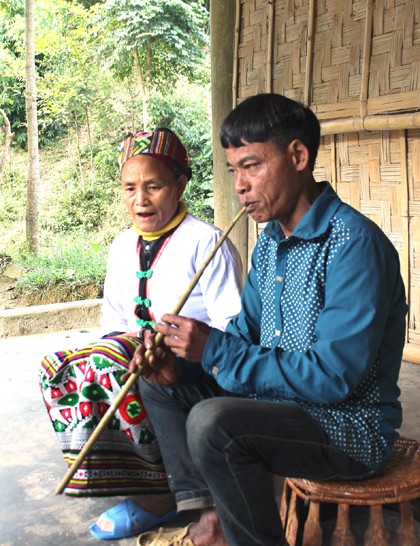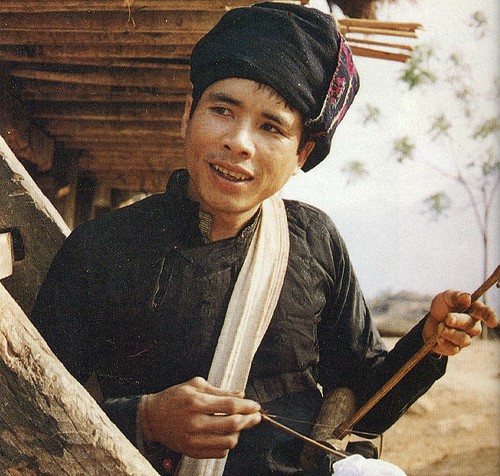(VOVworld) – The cultural life of the Kho Mu is closely associated with the mountains and forests. Despite social changes, some age-old customs have been maintained in their daily life and community festivals.
 |
A 3-hole panpipe of the Kho Mu
|
The Kho Mu hamlets nestle in primitive forests and mountains. Their stilt houses are built of bamboo and rattan trees. The curved-grass rooves look like tortoise shells leaning on the mountains and overlooking a vast valley. Their indigo-died clothes match the color of forest trees. Their songs and music reflect the murmuring of brooks, rustling wind, and mysterious sounds of deep forests. Inside their houses are handmade utensils and made of bamboo and rattan trees. Their musical instruments are also made of bamboo tubes, which produce unique sounds.
Dinh Sau is a researcher and collector of ethnic musical instruments: “The musical instrument absorbs the soul of the mountains and forests. Many of them are still used today such as the “Ôm đing”, “Đao”, “Tót”, and “Pí tơm”. These musical instruments accompany joyous dances in community festivals such as the “fish dance”, “scarf dance”, and “dance to welcome a new year”.”
 |
| One-string fiddle of the Kho Mu |
“Đao” is a popular musical instrument made of many rattan tubes which is played by knocking on the tubes. It was originally a tool to scare birds from eating seeds. “Tót” and “Pí Tơm” are bamboo or rattan panpipes which produce sounds like rustling winds in the mountains. The most typical musical instrument is the “Ôm đinh”, which was modified from a bamboo tubes to fetch water.
Cong Dan is a Kho Mu man: “The Kho Mu didn’t have gongs. They processed bamboo tubes to make similar sounds as the gongs. It has 3 strings that produce low, medium, and high pitch.”
Music and musical instruments are invaluable cultural values of the Kho Mu as well as Vietnam’s ethnic groups. Folklorist Vi Van An from the Vietnam National Museum of Ethnology talks about the preservation of the Kho Mu music: “It’s necessary to review musical genres, melodies, and instruments of the Kho Mu to preserve them for the future generation. We can display them at museums and support Kho Mu to teach their children to make musical instrument.”
Despite social changes towards modernity, the Kho Mu fall in line with nature and enjoy simple things endowed by nature.